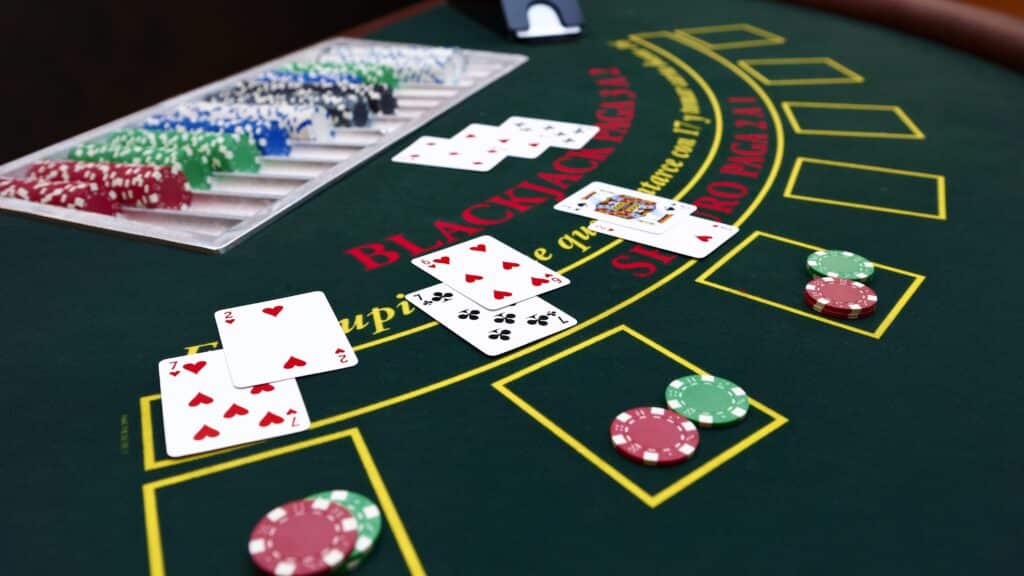Blackjack is one of the most popular and enduring casino games in the world. Known for its unique blend of strategy and luck, this card game has captivated players for centuries. In this article, we will explore the history of Blackjack, delve into its rules, offer some fun facts, and provide advanced tips for players looking to up their game. Whether you are a new player or a seasoned pro, there’s something for everyone in the world of Blackjack.
The History of Blackjack
Blackjack has a fascinating history that stretches back several centuries. Though its modern form is recognized around the world today, its origins are far from straightforward. In this section, we’ll take a look at where Blackjack comes from and how it evolved into the game we know and love today.
Early Beginnings of Blackjack
Blackjack traces its roots to Europe, particularly to a game called "vingt-et-un," which means "twenty-one" in French. This game, which dates back to the 17th century, was similar to modern Blackjack but lacked some of the more familiar rules and strategies we use today. Vingt-et-un was played with a standard deck of cards, where players aimed to reach a hand value of 21, just as they do in Blackjack.
During the 18th century, the game was introduced to the United States, where it gained popularity. It was in America that the game began to evolve into its modern form, with changes to the rules that made it more competitive and appealing to a broader audience. In the early days of Blackjack in America, casinos offered special bonuses for a hand consisting of the Ace of Spades and a black Jack, hence the name "Blackjack." While this special rule is no longer common, the name stuck.
Blackjack in the 20th Century
By the 20th century, Blackjack had firmly established itself as one of the premier casino games. However, the game’s trajectory took a significant turn in the 1950s when the first card counting systems were developed. This new strategy allowed skilled players to gain an edge over the casino, leading to increased interest in the game. As Blackjack’s popularity surged, casinos started implementing various strategies to counter card counting, such as using multiple decks and employing automatic shuffling machines.
In 1962, the book "Beat the Dealer" by Edward O. Thorp, a mathematics professor, introduced card counting to the public. The book explained how players could use mathematics and probability to make better decisions while playing Blackjack. The strategies presented in this book were revolutionary and created a new wave of skilled players who could beat the odds at the Blackjack table.
Blackjack Today
Today, Blackjack is a global phenomenon and one of the most widely played casino games in both land-based and online casinos. The game is offered in countless variations, and players can enjoy it in various formats, including traditional table games, video Blackjack, and live dealer Blackjack. The widespread availability of online Blackjack games has made it easier than ever for players to enjoy the game from the comfort of their homes, while live dealer options offer an authentic casino experience through streaming technology.
The Rules of Blackjack
Blackjack may seem intimidating at first, but it has a simple set of rules that make it accessible to players of all experience levels. Understanding the basic gameplay, including hand values and actions, is key to playing the game effectively. Let’s break down the rules of Blackjack so that you can hit the tables with confidence.
Basic Gameplay
Blackjack is typically played with one or more standard 52-card decks. The objective of the game is to get a hand total that is closer to 21 than the dealer's hand, without exceeding 21. If your hand value exceeds 21, you bust and lose the round. Here’s how the game is played:
- Dealing the Cards: Each player and the dealer are dealt two cards. Players’ cards are dealt face-up, while the dealer has one card face-up (the "upcard") and one card face-down (the "hole card").
- Card Values: Cards from 2 to 10 are worth their face value. Face cards (Jack, Queen, King) are each worth 10 points, and Aces can be worth either 1 or 11, depending on what is more advantageous for the player’s hand.
- Player’s Turn: After the initial deal, players take turns deciding what action to take. The options include:
- Hit: Ask for an additional card to improve the hand.
- Stand: Keep the current hand and end the turn.
- Double Down: Double the original bet in exchange for receiving only one more card.
- Split: If the first two cards are of equal value, you can split them into two separate hands, each with its own bet.
- Surrender: Some casinos allow players to surrender their hand, losing only half of the original bet and ending the round early.
- Dealer’s Turn: After all players have completed their hands, the dealer reveals the hole card. If the dealer’s hand is 16 or less, they must hit until they reach 17 or higher. If the dealer busts, all remaining players win.
- Winning the Round: If your hand is closer to 21 than the dealer’s, you win the round. If your hand exceeds 21, you bust and lose the round. If the dealer busts, players with a hand value of 21 or less win.
Blackjack Payouts
One of the key aspects of Blackjack is the payout structure. Here’s how winnings are typically paid out:
- Standard Win: If you win the round, you are paid 1:1 on your bet.
- Blackjack: If you are dealt an Ace and a 10-value card (10, Jack, Queen, or King), this is called a "Blackjack," and you are paid 3:2 on your bet. A Blackjack is the highest possible hand in the game and beats all other hands, including a hand totaling 21.
- Push: If your hand ties with the dealer's hand, it’s called a push, and you get your original bet back.
- Insurance: If the dealer's upcard is an Ace, you may be offered insurance, which is a side bet that the dealer has a Blackjack. If the dealer does have a Blackjack, the insurance bet pays 2:1, but the player loses the original bet.
Fun Facts About Blackjack
Blackjack has an intriguing history and many fascinating facts that add to its appeal. Here are some fun and interesting tidbits about the game:
- Card Counting: Card counting is one of the most famous strategies in Blackjack, and it was popularized by the book "Beat the Dealer" by Edward O. Thorp. Although casinos have implemented countermeasures to prevent card counters, such as using multiple decks, card counting is still legal in most places and remains a powerful tool for skilled players.
- Longest Blackjack Streak: The longest winning streak in Blackjack history is reportedly 8,000 consecutive wins, achieved by a team of professional card counters in the 1980s. This team, known as the "MIT Blackjack Team," used sophisticated card counting systems to win millions of dollars from casinos.
- Blackjack in Pop Culture: Blackjack has appeared in many films and TV shows, most notably in the 1995 film "Casino" and the 2001 film "21," which was based on the true story of the MIT Blackjack Team. The game has also been featured in numerous video games, including several online casino platforms.
- Mathematical Edge: Blackjack is one of the few casino games where players can reduce the house edge significantly by using optimal strategies, such as card counting. The house edge for a skilled player can be as low as 0.5%, making it one of the most favorable casino games in terms of odds.
- Blackjack’s Global Popularity: Blackjack is played in casinos around the world and has millions of enthusiasts. It is considered a staple of both land-based and online casino offerings.
Advanced Blackjack Strategies
For more experienced players, understanding advanced strategies can help reduce the house edge and maximize your chances of winning. Here are a few tips and strategies that can enhance your Blackjack gameplay:
Card Counting
Card counting is one of the most well-known advanced strategies in Blackjack. It involves keeping track of the ratio of high to low cards remaining in the deck to determine whether the player or the dealer has the advantage. By doing so, players can adjust their bets and playing decisions based on the remaining cards. However, it requires significant practice and concentration, and casinos are quick to identify card counters.
Basic Strategy Chart
Another essential strategy is the use of a basic strategy chart, which outlines the optimal action to take based on your hand and the dealer’s upcard. A basic strategy minimizes the house edge by providing the best statistical decision for any given scenario.
Advanced Betting Techniques
Advanced players may also employ betting techniques such as the Martingale system, the Paroli system, or the Oscar’s Grind betting system. These systems involve adjusting bet sizes based on wins and losses to potentially increase profitability over time. However, they also carry risks and should be used with caution.
Conclusion
Blackjack is a timeless game with a rich history, simple rules, and endless strategic depth. Whether you are a beginner learning the basics or an advanced player looking to fine-tune your skills, Blackjack offers something for everyone. By understanding the game's history, mastering the rules, and exploring advanced strategies, you can improve your chances of success and enjoy the excitement that comes with each hand dealt. So, next time you sit down at the Blackjack table, be sure to apply what you’ve learned, and may the odds be ever in your favor!



